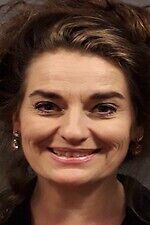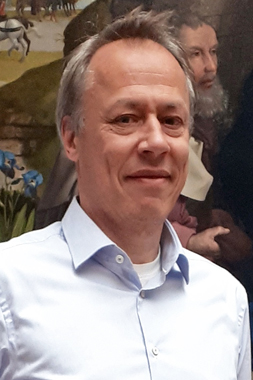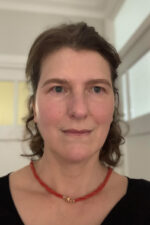Speakers
 Micha Leeflang
Micha Leeflang
Curator of Medieval Art, Museum Catharijneconvent, Utrecht
Micha Leeflang (1975) studied technical art history at the University of Groningen, where she defended her dissertation Uytnemende Schilder van Antwerpen. Joos van Cleve: atelier, productie en werkmethoden in 2007. From 2005 to 2007 she was on the staff of the Rijksmuseum in Amsterdam as curatorial researcher. Since 2007 she has been a curator at Museum Catharijneconvent in Utrecht.
Religious Art in Museums and in Situ: What Is Preferred?
Very few of the religious artworks and works of applied art produced in the Netherlands, whether paintings, sculptures, liturgical vessels, or vestments, have been preserved in their original settings. Many have disappeared or been lost altogether since the Reformation. Some have been preserved, however – a few in churches and more commonly in museums. Micha Leeflang will explore the differences between seeing items of religious heritage in a museum and seeing them in situ, while also highlighting the importance of a knowledge of the artwork’s original context to the experience and interpretation of religious art.
 Annika Williams
Annika Williams
Curator, Hallwyl Museum, Stockholm
Annika Williams is curator of the Hallwyl Collection, at the Department of Collections and Research of the overarching organization The National Historical Museums. In this capacity she has curated many exhibitions at the Hallwyl Museum in Stockholm and at Skokloster Castle in Skokloster, Sweden.
Powerful Storytellers – Reading and Understanding Collections in Situ at Skokloster Castle & the Hallwyl Museum. A Country House and Townhouse Experience
Anyone who visits Skokloster and the Hallwyl museum is bound to find it a captivating experience. As historic house museums they form an integrated whole and may be approached from numerous angles. The painting collections are at the core of their narratives. What is the role of their art collection today? The houses were built to be visited and to speak to an audience: the owners wanted their paintings to be looked at. What did they seek to communicate through their art collection? This raises the broader question of how individual paintings relate to the collection and setting. In her lecture, Annika Williams will examine these topics and discuss the way the in situ experience helps us to understand, analyze, and read the historic house and its collections.
 Daniëlle Kisluk-Grosheide
Daniëlle Kisluk-Grosheide
Curator of European Sculpture and Decorative Arts, The Metropolitan Museum of Art, New York
Daniëlle Kisluk-Grosheide is the Henry R. Kravis Curator, in the Department of European Sculpture and Decorative Arts at the Metropolitan Museum of Art in New York. She is a graduate of the Free University of Amsterdam and of Leiden University with a specialization in the decorative arts. She is responsible for the collections of French decorative arts and period rooms at The Met and has lectured and written extensively on various aspects of the European decorative arts.
Period Rooms – Fact or Fiction?
In many museums, period rooms are the favored destination of countless visitors. However, removed from their original setting, are these interiors reconstructions or perhaps more broadly conceived as evocations of what they once were? The art critic Ken Johnson once referred to period rooms in The New York Times as “Part time machine, part Masterpiece Theater … a paradoxical museum animal.” In her lecture, Danielle Kisluk-Grosheide invites us to take another look.
 Bert Watteeuw
Bert Watteeuw
Director, Rubenshuis, Antwerp
Bert Watteeuw was named director of the Rubens House in 2021. Before that he worked as a researcher for the Rubenianum and the Rubens House. In 2018 he was appointed as project coordinator for the architectural master plan for the Rubens House site.
Art and Illusion. Art in Situ in the Rubens House
The Rubens House brings visitors closer to the artist than is possible elsewhere. It was here that Rubens produced his monumental oeuvre, built up his art collection, and led an extraordinarily rich life. Even so, in the strictest sense, it contains scarcely any art in situ. Most of the artworks in the collection were not intended for the place where they can now be seen, although many were made there and/or were preserved there for varying periods of time. Acquiring works to return them to the house they embellished in Rubens’s lifetime is an extremely satisfying thing to do. However, that is not what is generally understood by art in situ. Bert Watteeuw discusses how the tensions between truly authentic, restoration, reconstruction, and evocation create a multi-layered amalgam – a palimpsest, that acquires meaning mainly as an ensemble, with art in situ as the permanent anchoring of the genius loci.
 Stephan Kemperdick
Stephan Kemperdick
Curator of Early Netherlandish and Early German Painting, Gemäldegalerie, Staatliche Museen zu Berlin, Berlin
Stephan Kemperdick studied fine arts at the Kunstakademie Düsseldorf 1983-87 and art history at the Free University Berlin. He graduated in 1992, and obtained his Ph.D. in 1996. He was assistant curator at the Städel Museum in Frankfurt and researcher at the Gemäldegalerie Berlin. In 2005 he became curator of old masters at the Kunstmuseum Basel and since 2008 he is curator of early Netherlandish and early German paintings at the Gemäldegalerie in Berlin.
Art in Situ: The Ghent Altarpiece
The famous large polyptych by the brothers Van Eyck has left its original location, returned to it, and left it again more often than any other work of art from the historic Netherlands. In this process, the appearance of the retable was changed several times, and at one point, it even existed in two semi-original versions, one of which occupied the chapel in St. Bavo in Ghent in which it had been first installed in 1432. When it left this chapel the first time, it not only lost its original religious function, while others gained more importance. The perception of the work and its individual parts likewise underwent changes in that process.
 Margriet van Eikema Hommes
Margriet van Eikema Hommes
Senior Specialist, Cultural Heritage Agency of the Netherlands
Margriet van Eikema Hommes is an art historian specialized in historical painting techniques and Dutch seventeenth and eighteenth-century interior paintings. She has conducted research into Dutch painting ensembles and is senior specialist at the Cultural Heritage Agency of the Netherlands.
The Necessity for Studying and Reconstructing the Original Placing of Interior Paintings
Nowadays, museums generally display interior paintings from the 17th and 18th centuries such as ceiling and mantel paintings, overdoors, and painted wall hangings as separate, individual images as though they were easel pieces. Margriet van Eikema Hommes will discuss a number of painting ensembles that she has studied over the years, drawing on her conclusions to show that displaying these works in a manner so different from their original configuration is ill-considered and misleading.
 Thijs Boers
Thijs Boers
Curator of Applied Arts, Amsterdam Museum, Amsterdam
Thijs Boers is curator of decorative arts at the Amsterdam Museum and curator at The Willet-Holthuysen Museum. He is also an external Phd-candidate at the University of Amsterdam where he researches the differences between the interiors of city dwellings and country houses (1700-1800).
Hidden Behind the Façade
In his case study Thijs Boers will discuss two Amsterdam Regents Rooms at almshouse Deutzenhofje and the city’s orphanage house, now the Amsterdam Museum. Are these true treasure chambers or is there more than meets the eye?
